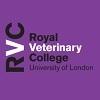Estimating the costs of Porcine Reproductive & Respiratory Syndrome (PRRS) at individual farm level using a tailor-made mathematical model
Published: September 19, 2022
Source : C. Nathues 1, P. Alarcon 2, J. Rushton 2, G. Schüpbach-Regula 1, R. Jolie 3, K. Fiebig 4, M. Jimenez 5, V. Guerts 6, H. Nathues 7.
Summary
Author details:
1 Veterinary Public Health Institute, Department of Clinical Research & Veterinary Public Health, Vetsuisse Faculty, University of Berne, Liebefeld, Switzerland; 2 Veterinary Epidemiology, Economics and Public Health Group, Department of Production and Population Health, Royal Veterinary College of London, London, United Kingdom; 3 Merck Animal Health, New Jersey, United States; 4 MSD Animal Health, Unterschleissheim, Germany; 5 MSD Animal Health, Madrid, Spain; 6 MSD Animal Health, Boxmeer, Netherlands; 7 Clinic for Swine, Department of Clinical Veterinary Medicine, Vetsuisse Faculty, University of Berne, Bern, Switzerland.
Keywords: Economic impact, Farm level calculator, PRRS.
Introduction:
Porcine reproductive and respiratory syndrome (PRRS) is among the diseases with the highest economic impact in pig production worldwide. Losses due to the disease were estimated as high as 560 Mio. US$ per year in the USA. Yet, the economic impact of the disease at farm level is not well understood as, especially in pig herds chronically infected with PRRS virus, the losses caused are often not obvious for farmers and veterinarians Thus, the aim of this study was to develop an epidemiological and economic model to determine the costs of PRRS for an individual pig farm.
Materials and Methods:
The model developed by Alarcon and co-workers to estimate costs of Porcine circovirus type 2 associated diseases in pig farms was used as a basis for modelling PRRS infection and costs in pig farms. In a production model that simulates the production of different farm types, batch systems, etc. - to account for different industry settings frequently found in Germany, Spain and The Netherlands - an epidemiological model was integrated. In this, the impact of PRRS infection on health and productivity, depending on PRRS severity, is estimated. From this, financial losses are calculated in a gross margin analysis and a partial budget analysis. Data on the effects of chronic infection and a disease outbreak on reproductive performance, piglet morbidity and mortality, daily weight gain, feed efficiency and treatment costs were obtained from the literature, from industry databases and from results of field studies, whenever possible. Data that were unavailable were estimated based on expert opinion.
Results:
The final calculator was coded as a spread sheet model in Microsoft Excel and displays the economic effect of PRRS at individual farm level. The model can account for different farm types, i.e. piglet producing farm, nursery farm, fattening farm and farrow-to-finish farm, for different herd sizes, types of batch farrowing (one-week- and three-week-rhythm), lengths of suckling period (three, four and five weeks), etc. The model input can be customized by front-end users with their particular farm characteristics. As an output, the user receives the marginal costs due to PRRS per sow or farm per year, a separate demonstration of single costs due to PRRS on his/her farm and the percentage of profits lost due to the disease.
Conclusion:
The model is a valuable tool for farmers in recognizing the economic impact of PRRS on their own pig farm. The output can help to understand the need for interventions in case of significant impact on the profitability of their enterprise. The model can support veterinarians in their communication to farmers in cases where costly disease control measures are justified.
Disclosure of Interest: C. Nathues: None Declared, P. Alarcon: None Declared, J. Rushton: None Declared, G. Schüpbach-Regula: None Declared, R. Jolie Conflict with: Employee of Merck, who financially supported this study, K. Fiebig: None Declared, M. Jimenez: None Declared, V. Guerts: None Declared, H. Nathues: None Declared.
Published in the proceedings of the International Pig Veterinary Society Congress – IPVS2016. For information on the event, past and future editions, check out https://ipvs2024.com/.
Content from the event:
Related topics:
Mentioned in this news release:

Recommend
Comment
Share

Would you like to discuss another topic? Create a new post to engage with experts in the community.










